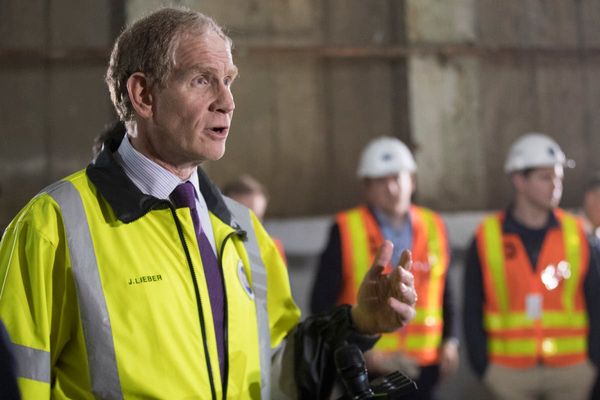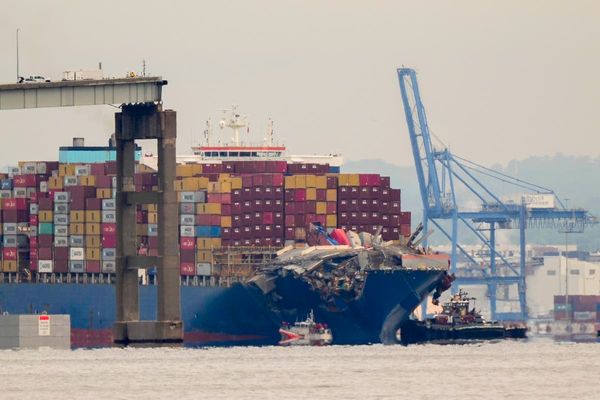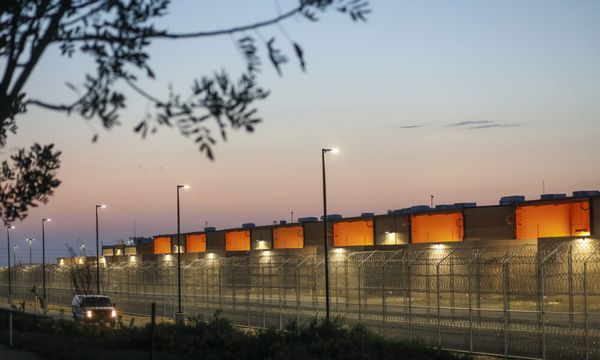
China is “exponentially” increasing its warship capability and has reportedly re-started mass production of guided-missile destroyers.
The Chinese Communist party-controlled newspaper, the Global Times, reported on Tuesday that China would complete its military expansion and modernisation by 2035, “including the development of a blue-water navy, to match the country’s international status and better defend its interests”.
A blue-water navy is one that traverses deep oceans and operates globally.
Naval News has reported that five type 052D destroyers, capable of launching long-range missiles, are being built.
John Blaxland, professor of international security and intelligence studies at the Australian National University’s strategic and defence studies centre, said China’s military expansion was “deeply worrying”.
“When you look at capability it is growing exponentially,” he said.
“It’s going from being a brown-water navy designed for close protection of China’s shores to a true blue-water navy.
“They are designed to assert China’s influence to match its economic growth, not just in the South China Sea, not just in the first island chain [which includes Taiwan], but also more expansively through the Indo Pacific and the Pacific Ocean.
“It’s growing the navy to bolster its economic heft with military muscle.”
New modelling from a US thinktank suggests China’s People’s Liberation Army (PLA) will dominate the region with a range of lethal warships and submarines by 2031.
In China’s Choices: A new tool for assessing the PLA’s modernization, the Center for Strategic and Budgetary Assessments said in less than a decade, “the PLA may have sufficient resources to boast five aircraft carriers and over 60 cruisers and destroyers,” as well as a new fleet of submarines.
As part of the modelling, teams of national security experts used a simulation of China’s $300bn defence budget to predict what Beijing would do.
The consensus was that China would become a global military threat beyond the current sabre-rattling about Taiwan with enough resources for expanded sea and air capability.
That expansion is happening “in stark contrast” to the trajectories of other navies including Australia’s, Blaxland said.
The federal government has begun a defence strategic review that will examine the shifting strategic environment and Australia’s looming naval capability gap.
There is a range of suggestions on how to fill the gap that will occur between when the ageing Collins-class submarines retire and the new nuclear-powered fleet is commissioned.
Experts have argued for buying new submarines “off the shelf” from other countries; unions are pushing for conventional submarines to be built in Australia; the opposition leader, Peter Dutton, has suggested buying US-built nuclear-powered submarines; defence is collaborating with private company Anduril to build robotic submarines; and Spanish shipbuilder Navantia has pitched the idea of building three more air warfare destroyers.
On Wednesday morning the Australian Strategic Policy Institute reported that a senior US official said if Canberra requested them, the US could provide B-21 Raider long-range bombers to boost Australia’s military firepower. The US would “be willing to talk to Australia about anything that there was an interest in from the Australian perspective that we could help them with”, US air force secretary, Frank Kendall, said.
Kendall said China was “as formidable a strategic opponent” as he had seen.
Blaxland said an increasingly nervous Australia had to realise there was “no silver bullet … [no] magic piece of kit that will solve all our problems”, and that the country needed to hedge its bets with a suite of different options.
“The more the merrier,” he said.
A spokesperson for the defence minister, Richard Marles, directed Guardian Australia to a recent speech in which Marles said China’s military buildup was “now the largest and most ambitious we have seen by any country since the end of the second world war”.
But China’s neighbours should not see that as a risk and upgrade their own capabilities in response, he said.
“Insecurity is what drives an arms race.”
Asked if all options for filling the capability gap were on the table, the spokesperson said they would not pre-empt the findings of the defence strategic review.







